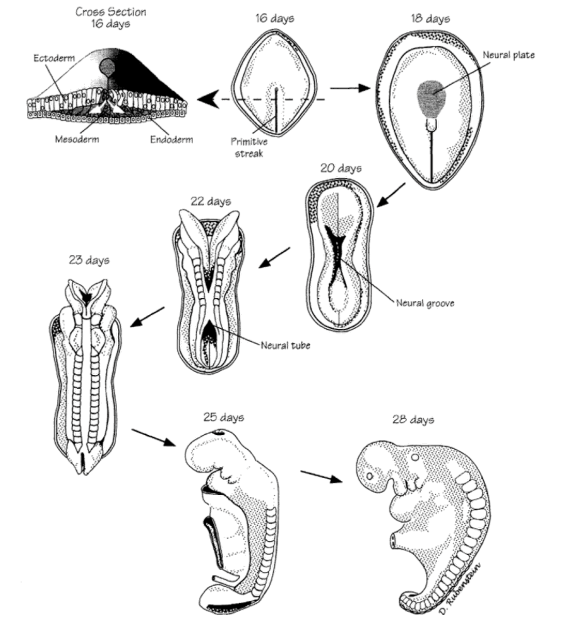Brain Development after Conception
Brain development appears quickly after conception, at just about 20 days after. The neural plate of the embryo folds up to form a groove, which then forms a tube that covers the majority of the length of the embryo. After about 26 days, the neural tube is closed, and at the top end, the first part of the brain develops. The bottom and rest of the tube will become the spinal cord of the embryo. Followed by multiple divisions and compartmentalization, the brain starts resembling something that we are more familiar with.

By six weeks in, swellings of the brain have developed into precursors of the pons, medulla, basal ganglia, cerebral cortex, thalamus and cerebellum. Cranial nerves have also begun forming at this point in time. After 8 weeks of development, the baby is about two inches long and is referred to as a fetus. This difference is when a developing baby begins to take a human form. It is recognizable as a human baby compared to other animals of similar age.
Our highly complex brain is the defining feature of us, compared to other primates. This requires longer development and integration to get us to this high level of complexity. The nervous system also takes longer compared to circulatory and digestive system. Areas that control breathing and eating emerge earlier than areas that are used for language and reasoning. During the Fetal period (week nine), only the spinal cord is fully developed so the movement of the baby is controlled by the spinal cord while the brain is still forming. After about 12 weeks the fetus has developed its midbrain and hindbrain to a large extent but, the cerebral cortex, the region of higher consciousness, is still smooth and undifferentiated. Following this, the cerebral hemispheres grow at a tremendous rate, while they thicken and expand toward the top of the head. The hemispheres also grow towards the back part of the head, to eventually cover the thalamus.
By 24 weeks, the fetus can in direct circumstances survive outside the womb. Its lungs can breathe, and through brain stem control, can direct rhythmic breathing, but the cerebral cortex is still not in its functional form. It is still smooth in majority and is beginning to form the major grooves. The larger the surface area of the brain, the more complex processing can take place. The growth in number and depth of the cortical folds increases greatly during early development, from the late fetal period to the first year of life.
 Over the first year of being alive, the brain triples in size and continually develops. On the outside, the brain does not seem to change greatly after birth, but the change lies within the brain cells, known as the neurons.
Over the first year of being alive, the brain triples in size and continually develops. On the outside, the brain does not seem to change greatly after birth, but the change lies within the brain cells, known as the neurons.
Reference:
Eliot, Lise. Whats Going on in There?: How the Brain and Mind Develop in the First Five Years of Life. New York: Bantam Books, 2000.
